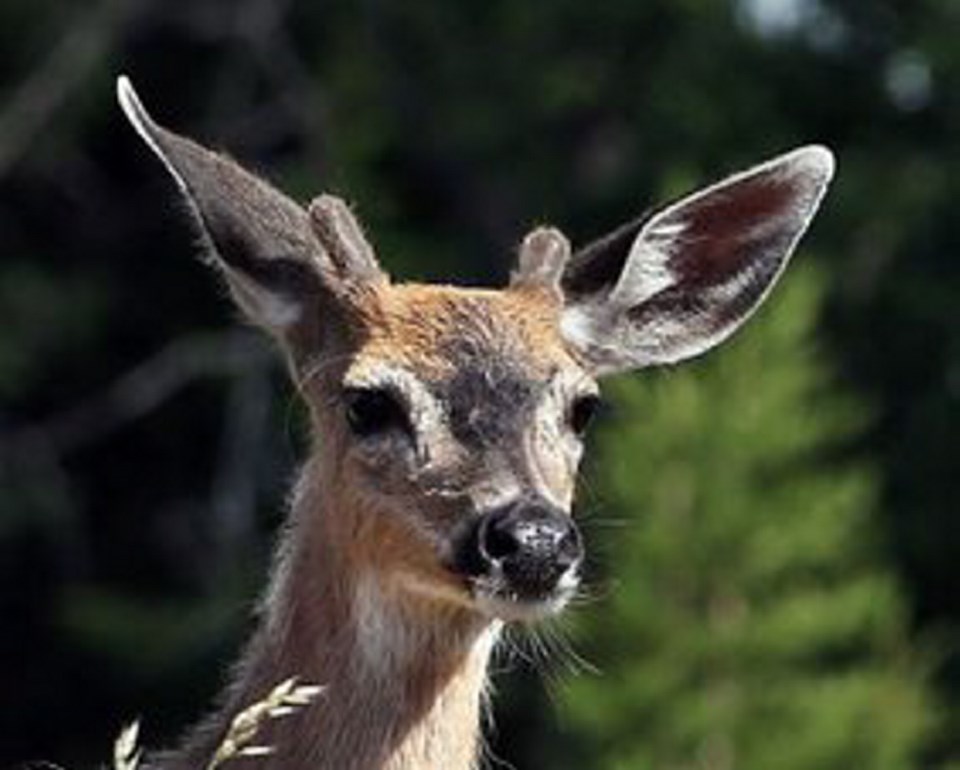Gulf Islands residents are wrestling with a deer population explosion that is threatening the landscape and its native plants.
“It’s a crisis and, if it’s left, it will become an emergency,” said Brian Crumblehulme, a Mayne Island trustee on the Islands Trust.
He said the “Bambi effect” is working against possible solutions such as shooting the animals, but wildlife biologists have advised islanders that more genteel solutions, such as tranquilizing or poisoning the deer won’t work.
The problem is most acute on Mayne Island, but alarm bells are ringing on nearby Saturna and Galiano as deer are strong swimmers.
Crumblehulme, who has lived on Mayne Island since 1978, said the pillaging of the landscape has left the bush a lot thinner than it was 30 years ago.
Only four people on the island are allowed to hunt deer — an RCMP officer and three farmers on large properties. They shoot about 200 deer a year, he said, but that is doing little to control the population.
Allowing more hunting would endanger humans on the island, he said, and the introduction of natural predators such as wolves or cougars is also not a popular option. “Run that by the local school and see what they say,” said Crumblehulme.
What is needed, he said, is a comprehensive study, likely funded by the provincial government, which, he said, erred by allowing fallow deer on Mayne in the early 1980s.
Plant biologists have watched the imbalance with growing alarm.
Tara Martin, a Saltspring Island resident with a doctorate in ecology and conservation, said wildlife such as songbirds are threatened because they need the vegetation to survive, she said.
“It’s not a war against deer; it’s just trying to get the ecosystem back in check,” Martin said.
To restore that balance, she suggests the removal of prohibitions on shooting female deer on some islands.
Rob Underhill, a biologist with the Mayne Island Conservancy Society, said if deer populations persist, plants such as arbutus trees will eventually become a rarity.
Cora Skaien, a PhD candidate at UBC involved in a discovery that a native plant, seablush, has adapted to survive in the presence of deer, said deer populations can be as high as 170 animals per square kilometre. Many of them are sickly because of overcrowding.
“Deer can cause hundreds of thousands of dollars in damage for farmers, gardeners and insurance companies from trampling, browsing and grazing,” she said.
UBC professor Peter Arcese said if we want to see native plants such as camas lilies and chocolate lilies survive, they must take steps to reduce deer populations.
“This might be interpreted as the evil biologist advocating shooting animals, but what we are interested in is trying to maintain some level of the historic diversity of plants and animals … and the only way we can do it is by intervening when we see things going dramatically awry.”



